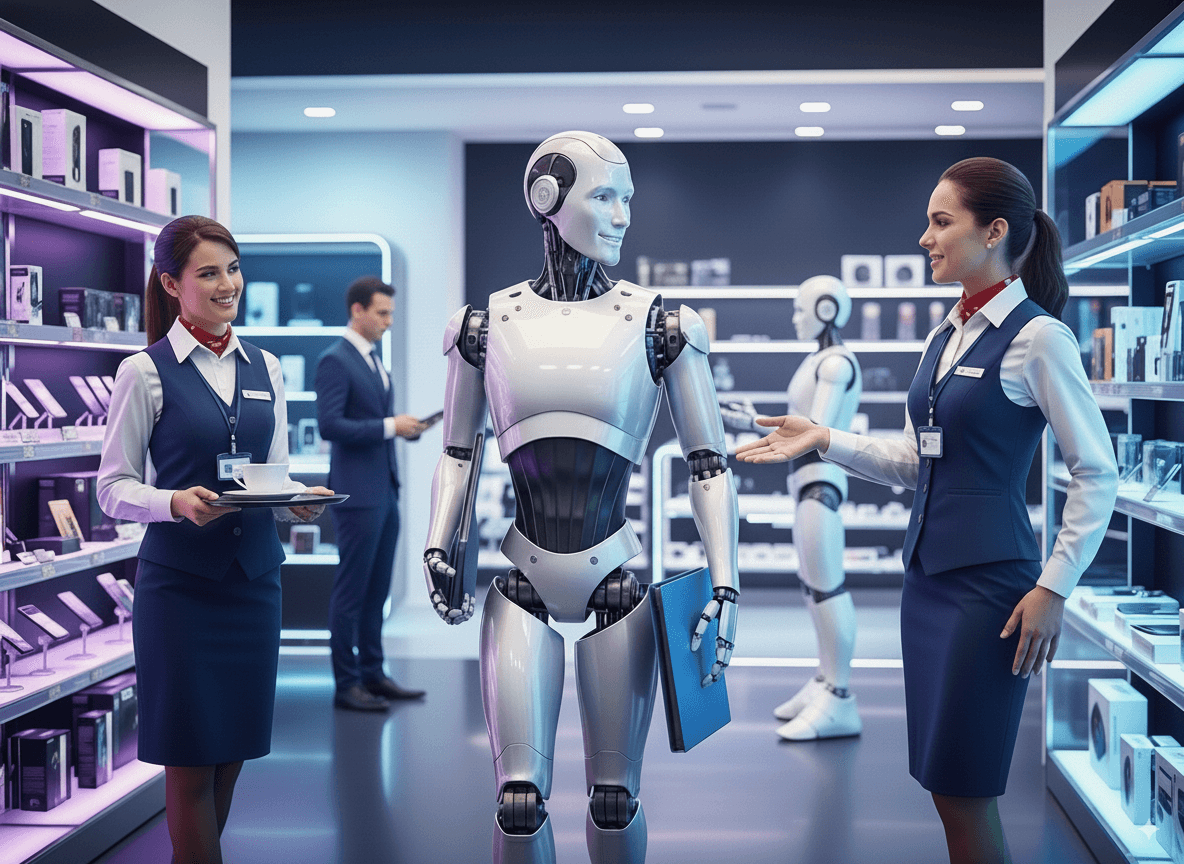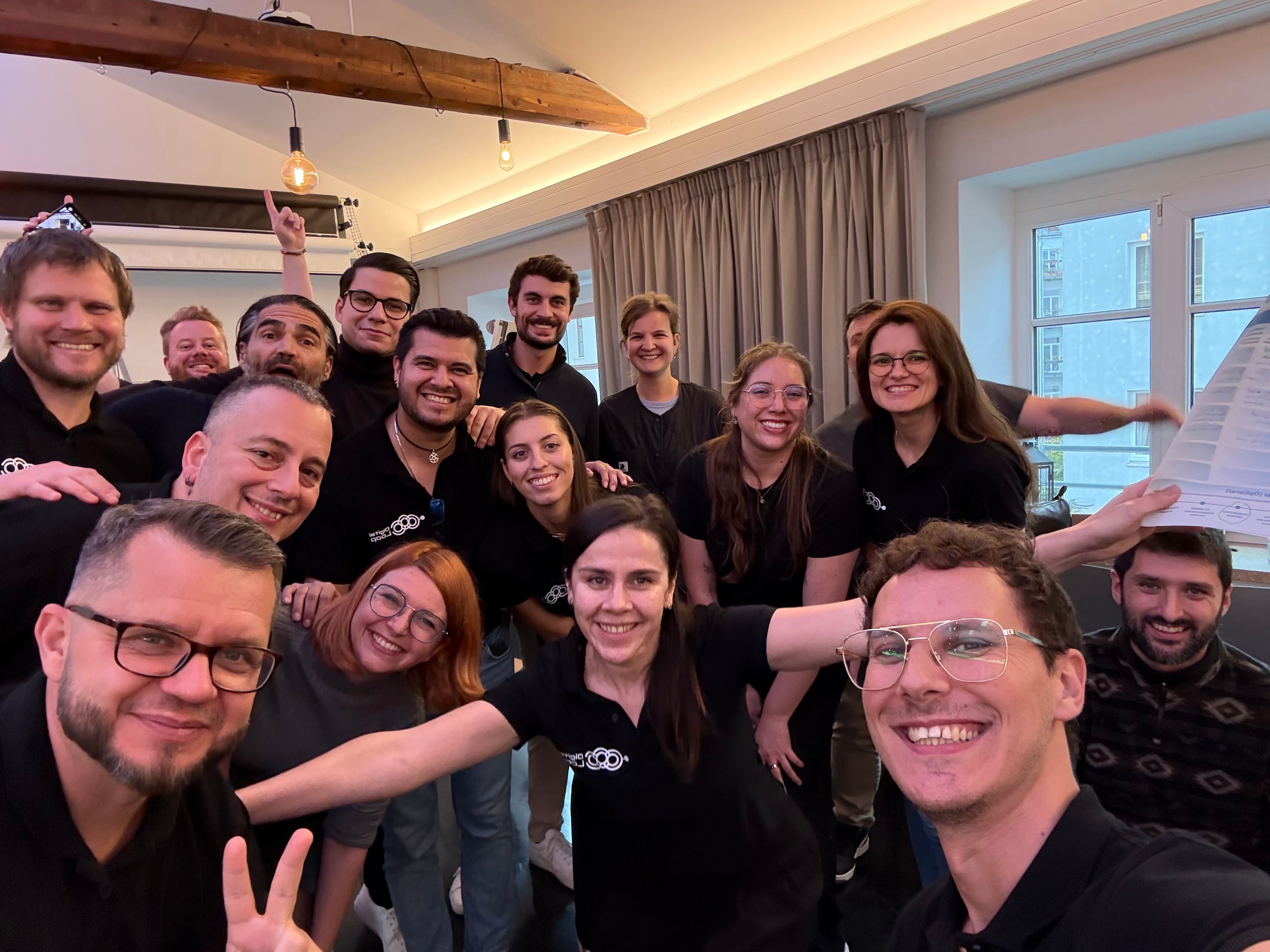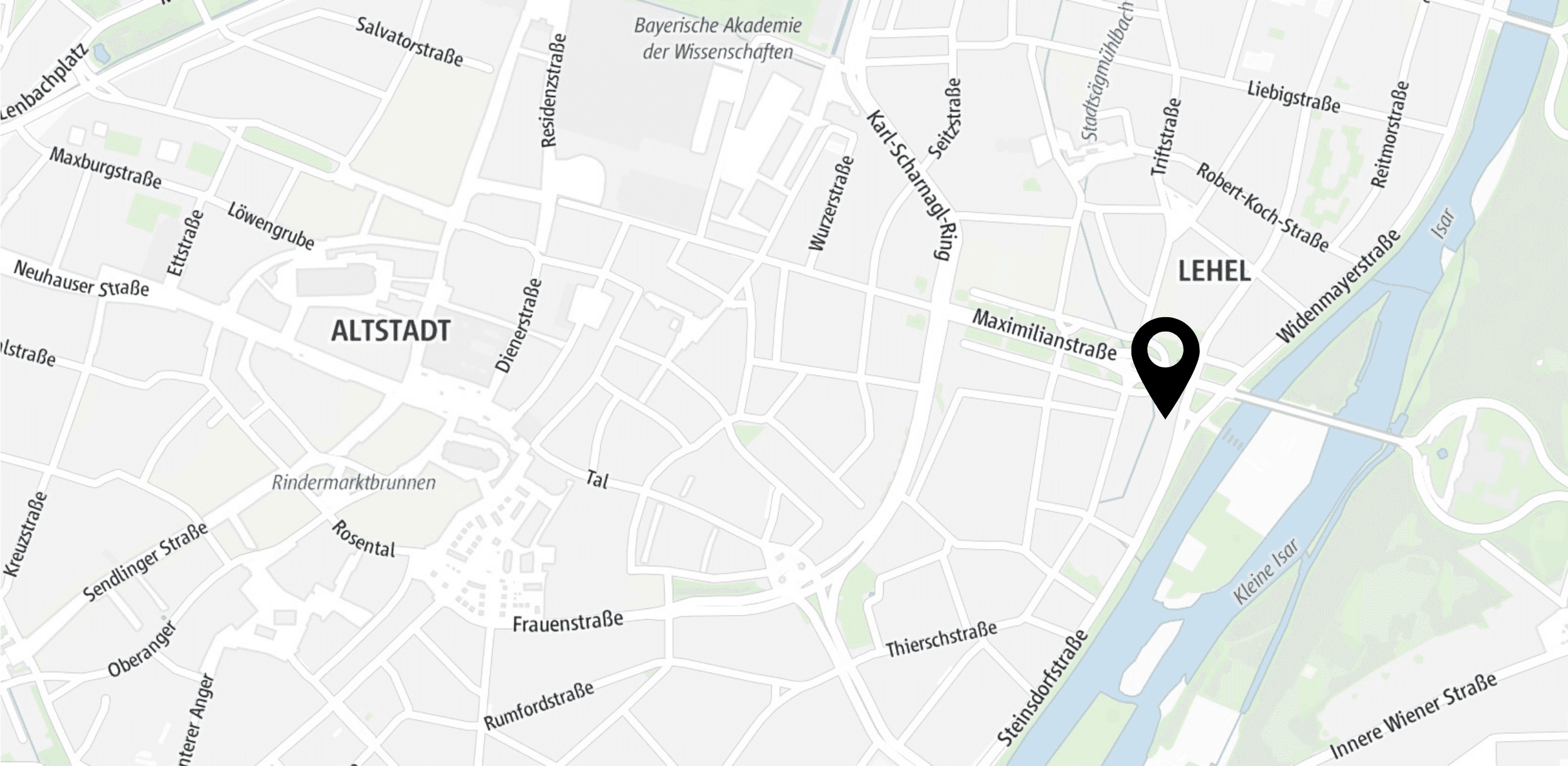Management Summary
Agentic Commerce describes shopping with AI agents that research, compare products, and increasingly make purchasing decisions independently on behalf of customers. Unlike traditional chatbots, these agents act autonomously and have direct access to tools and data, such as detailed product information.
Leading providers are currently laying the technical foundations: Visa (Intelligent Commerce), Mastercard (Agent Pay), and PayPal (Agent Toolkit & strategic partnerships) enable secure payments to be made by agents in the background. At the same time, shop systems such as Shopify and SAP Commerce are preparing their platforms to make product information, shopping carts, and checkout accessible to AI agents, often via the Model Context Protocol (MCP), which is establishing itself as the standard for agent communication.
In an agentic commerce world, shopping is increasingly shifting to agent UIs: Examples include the Amazon Shopping Assistant Rufus in the Amazon app, ChatGPT with shopping cards and purchase links, Perplexity with integrated PayPal checkout, and Google with its new AI Mode and shopping features such as price tracking. This development is fundamentally changing reach and customer journeys一marketing strategies need to be rethought.
For heads of marketing, CTOs, and CMOs, this means:
- Providing product data, prices, availability, and policies in a form suitable for AI agents
- Building touchpoints for new agent channels (AEO/GAIO instead of pure SEO)
- Strengthening customer trust and establishing control mechanisms for transaction limits, invoices, and returns
- Launch pilot projects early to gain experience一companies that adapt new technologies early and consistently will position themselves as market leaders.
The market is moving fast: According to PwC's AI Agent Survey, over 70% of companies are already using or implementing AI agents一and investment is rising significantly at the same time. [Source: PwC AI Agent Survey (https://www.pwc.com/us/en/tech-effect/ai-analytics/ai-agent-survey.html)]
„Brands that fail to adapt quickly to new shopping channels will quickly disappear from customers' view.”
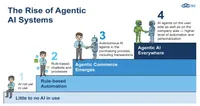
What is Agentic-Commerce?
Agentic commerce is the next stage of online shopping: independently acting AI agents take over the entire shopping process for the customer一via OpenAI's Operator or ChatGPT Agent, which still uses the internet as a “proxy” to find and compare products. In an agentic commerce world, the entire shopping process takes place with an AI assistant. This assistant has direct access to the necessary data and tools to carry out the shopping process. With access to personal data, this also allows for a high degree of personalization, e.g., favorite shirts, perfumes that suit my taste, or insurance policies that fit my stage of life.
While AI agents today often serve only as shopping assistants, they will also take over the entire purchase process in the future.
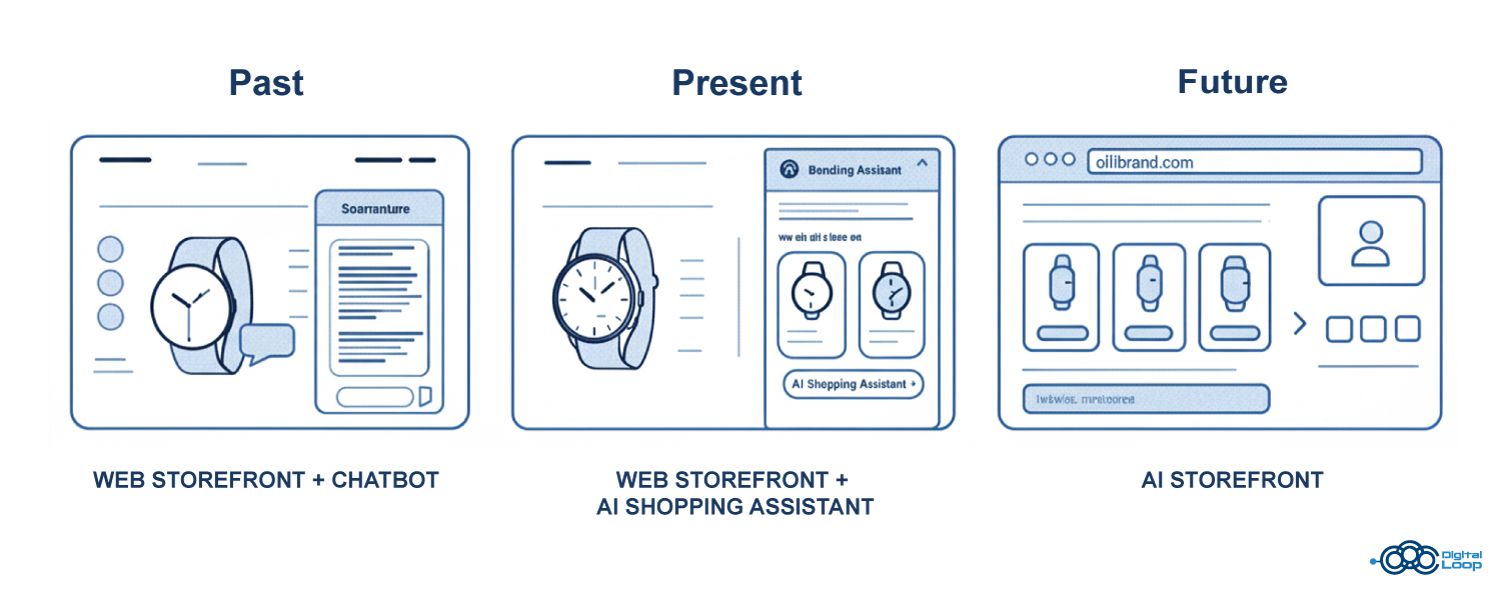
Practical examples today:
- ChatGPT Search: Offers interactive shopping carousels with prices and product links, and tests smooth purchasing processes.
- Check24 AI Assistant: Answers user questions, compares rates and offers, and assists with purchasing decisions一directly in the Check24 app.
- Perplexity + PayPal: Enables users to purchase products, tickets, or travel directly in the chat一with convenient payment via PayPal or Venmo.
- Google AI Mode: Describe your purchase scenario, and Google will suggest suitable products. Enhanced with features such as Price Tracker (as of August 2025, only rolled out in the US).

Why should I concern myself with agentic commerce now?
The market is developing rapidly
With new tools and updates from major players (Google, Amazon, etc.) appearing every day, time-to-market is crucial to remaining competitive. Based on ChatGPT user numbers and according to Statista, it is clear that the cycles until technologies, in this case ChatGPT, have their breakthrough have been massively reduced. This puts large companies in particular under pressure to act sooner rather than later, considering that such transformations within a company can be lengthy.
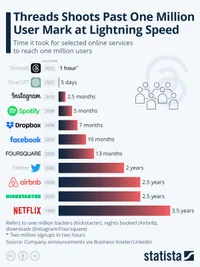
This also means that new AI-supported marketing channels are emerging and growing (ChatGPT, Perplexity AI, etc.), but also that the dominant search engine Google is changing completely—as can be seen from the AI Overviews and AI Mode.
An example from the Astra project, now integrated into Google's AI Mode, shows where the journey is headed:
New marketing disciplines are emerging: What’s AOO (Agent-Oriented Optimization)?
Until now, the focus has been on designing websites so that they are easy for human visitors to find and understand一in other words, classic content marketing, UX, and SEO optimization for search engines. In the new era of agentic commerce, this is no longer enough.
AI agents will search for products on behalf of customers, compare them, and prepare or make purchasing decisions一most likely with a high degree of accuracy. To ensure that these agents display your offers preferentially, they need not only attractive text but also structured, reliable, and machine-readable data.
An AOO (Agent-Oriented Optimization) Manager does exactly that:
- Enrich product data: titles, descriptions, attributes, context
- Prices & availability: real-time information via APIs or feeds
- Guidelines & policies: return rules, delivery times, warranties
- Identifiers: GTIN, MPN, brand information
When this data is available directly and in high quality, agents can make informed recommendations—and place your products more accurately, prominently, and with higher conversion rates. In classic performance marketing, where a high degree of dispersion is accepted (or even statistically necessary), more precise targeting becomes possible or is likely to be rewarded by AI systems, as they optimize your product when users find what they are looking for.
Of course, AOO should not be viewed in isolation, but rather as a further development of existing strategies such as AEO (Answer Engine Optimization) or GAIO (Generative AI Optimization).
| Aspect | SEO (Search Engine Optimization) | AOO (Agent-Oriented Optimization) |
| Business Impact | Increase visibility in search engines such as Google | Increase findability and prioritization through AI agents |
| Primary Target Audience | Website content, technical structure, backlinks | Structured, machine-readable product and service data, structuring texts |
| Task | Webseiteninhalte, technische Struktur, Backlinks | Strukturierte, maschinenlesbare Produkt- und Servicedaten, Texte strukturieren |
| KPIs / Metrics | Rankings, organic traffic, organic click-through rate (CTR), impressions, visibility index (how effective are my individual pages) | (Agent-Share of) traffic, agent conversion rate, data completeness, agent discovery rate (how often are products recommended by the agent), agent NPS, error rate in the feed (as with Google Shopping) |
| Technical Focus | Meta Tags, page speed, mobile optimization, indexing | API interfaces, real-time price/availability data, policy information, structured data |
| Content Focus | Keyword optimization, content marketing, on-page/off-page strategies | Data quality, timeliness, contextual information for agents, sentiment |
How companies should prepare now
Companies should prepare their product and catalog data in a complete, consistent, and machine-readable format. This data is essential for providing AI agents with more context.
Making your own products available via the shop system, PIMs, or ERPs一the Model Context Protocol (MCP) is currently the technology that is gaining acceptance and has already been adopted by many providers.
Experiment and pilot一familiarize yourself and your teams with the technology. Define and prioritize business use cases, tech stack, and your target architecture.
”Time-To-Market is the key to success."
Roadmap for your project (1–3 months per phase)
- Phase 1 – Validate (data) readiness
An essential but underestimated step – What data sources are available, how can I access them technically, and what is the quality of the data?
- Phase 2 – Piloting
Which use cases are important to me – initial POC to test the technology, but also to test product viability.
- Phase 3 – Building MVPs
Implement product concept and first MVP – create initial business impact.
- Phase 4 – Go-to-market and enabling
Roll out, usually integration into the enterprise landscape, and operation according to the operating model.

This should be done iteratively and with regular data-based check-ins. Not only quantitative metrics should be used, but also qualitative ones such as user satisfaction.
Conclusion
An AI-based e-commerce world may still seem a distant prospect to some, but the fact is that the technology is already there, and players in the e-commerce system (shops, payment providers, etc.) are already in the process of creating the framework for a new agentic-driven e-commerce environment.
The Agentic concept described above will also be implemented in other areas of business, such as ordering food, reserving a table, and finding and booking hotels, among others.

